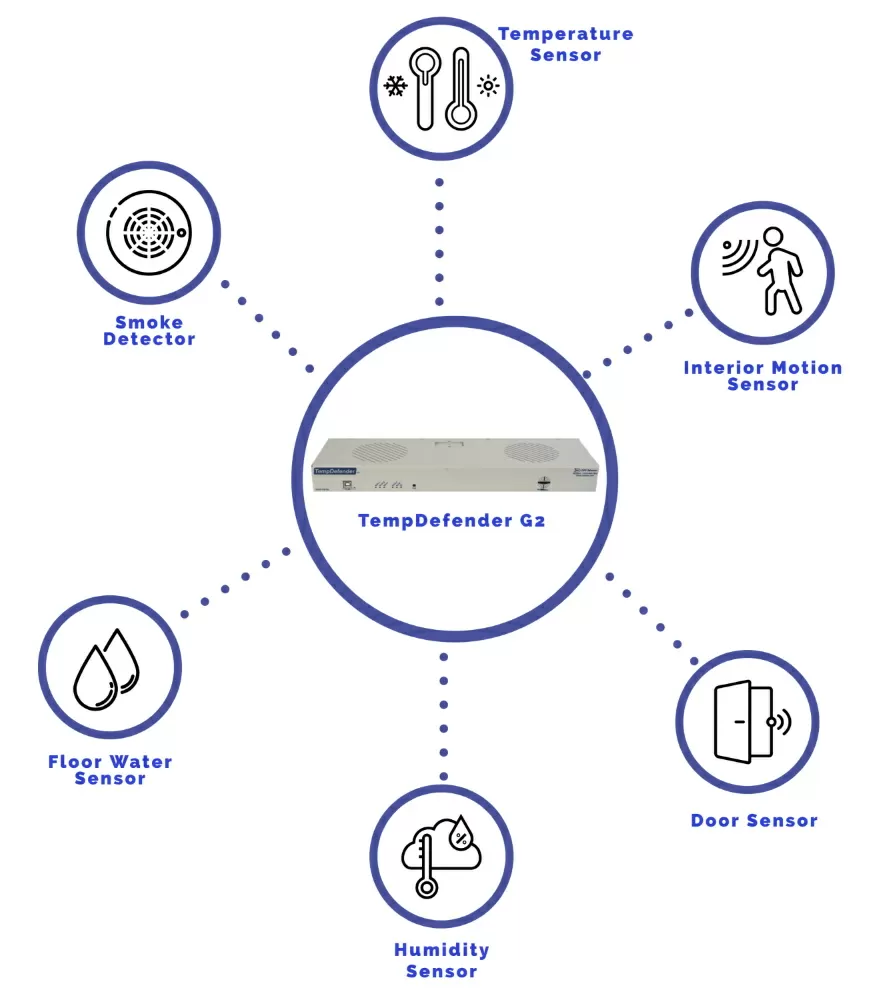Download our free Monitoring Fundamentals Tutorial.
An introduction to Monitoring Fundamentals strictly from the perspective of telecom network alarm management.
1-800-693-0351
Have a specific question? Ask our team of expert engineers and get a specific answer!
Sign up for the next DPS Factory Training!

Whether you're new to our equipment or you've used it for years, DPS factory training is the best way to get more from your monitoring.
Reserve Your Seat TodayAre you monitoring the mission-critical devices in your network? What happens if a piece of equipment goes down at one of your sites? Does your whole network come to a screeching halt? Or is service disrupted to your customers?
A network outage can be a disastrous affair. For starters, it's expensive - every minute your network costs you money - especially if you violate your SLA and incur hefty penalties. Real-time monitoring can help you maintain your network uptime - saving you thousands upon thousands of dollars.
Second, the productivity of your team drops, because instead of working they're busy fixing your network. The outage could disrupt service to your customers too - which will leave you with throngs of angry users wondering why their provider's service isn't reliable.

Fortunately, there's a simple solution to avoiding preventable network outages. If you're ready to avoid crippling outages, then you'll want to take a few minutes to read about real-time monitoring.
Real-time network monitoring is precisely what it sounds - monitoring the critical equipment across your network in real-time. Instead of distant remote sites being blind spots in your network, you'll now have visibility over these locations. This means you'll know when there's a problem with your equipment, so you can quickly respond and prevent serious problems.
Not all network monitoring systems are created equal. If you're not careful, you'll end up with a solution that's destined for failure. Too many systems fail to see the big picture and leave out critical features you can't live without. This leads to more headaches for you and your team.
So, what are these critical features? Here are the following features that your real-time monitoring system needs (at the bare minimum)...
Basic discrete sensors can only report basic "on" or "off" information to you. These kinds of sensors are great for monitoring things like power, motion, etc., but not for variables like temperature, humidity, flow rates, water levels, etc.
Analog sensors compensate for this by allowing you to view real-time data about your equipment. With an analog sensor, you can see the precise temperature, relative humidity, etc. Ideally, you'll want a monitoring system that can provide you with both discrete and analog inputs - this gives you maximum coverage over your network.
No monitoring system is truly effective without the right backup plan. If the first person notified of a threat isn't able to respond, someone else must be notified ASAP.
A good monitoring solution will provide you with an escalation list, which will allow you to program backup people to notify - that way a single user doesn't miss an alarm, ultimately leading to an outage.
When it comes to maintaining critical network uptime, you absolutely have to know when there's a problem - no matter the time of day or your location. It's essential that your monitoring alerts can be received 24 hours a day, 7 days a week - either by a central master station, a NOC or by your technicians on their phone or pager.
Look for devices that can provide you with flexible notifications - via traps to a NOC, email, pages, SMS text messages, or voice alerts.
Setting up and monitoring your alarms doesn't need to be headache-inducing. With many systems, you'll have to deal with a needlessly complicated interface or a text-only interface.
You don't have to deal with the hassle. Your monitoring system should provide an intuitive and easy-to-use graphical web interface. Managing your alarms should be easy - not a daily struggle.
Your real-time monitoring system won't be effective if it isn't built to last. Don't settle for an alarm monitoring system that's cheaply built and destined to break.
Look for durable, industrial-grade hardware that can withstand the conditions at your sites. Anything less than a powder-coated, metal chassis won't likely be durable enough to monitor your network.
Imagine how much more reliable your network could be with a good monitoring system. Instead of a problem with your gear bringing down your entire network - you'll know instantly and can respond quickly. You'll be able to avoid preventable outages - ultimately saving you tons in cash each time your monitoring gear saves the day.
In order to guarantee that your monitoring project goes smoothly, you'll want to make sure you have a solid foundation about real-time monitoring basics. By downloading and reading the free Network Alarm Monitoring Fundamentals White Paper, you'll be equipped to avoid dooming your project.
You'll learn how to avoid the costly mistakes that send monitoring projects over budget with lengthy delays. Your monitoring system is supposed to help you - not hold you back.
To get started saving money, call 1-800-693-0351 or email sales@dpstele.com